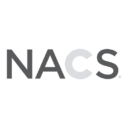
Insights
Electronic Benefits Transfer (EBT) State-Level Changes

The states of California and Oklahoma have recently decided to issue EBT EMV cards in a move designed to mitigate fraud. Neither state has provided an exact date of issuance, yet both states have confirmed their plans to begin issuing these EBT chip cards this summer.
While the theory remains that this implementation will help to protect consumers, in practice the payment facilitators have not received the specifications to code to, and therefore will not be ready to accept these cards at the anticipated time of issuance.
Assessing the Impact
Acceptance of EMV cards is an involved, coordinated process that requires not only the card issuer, but the payment processor and POS provider to be ready for acceptance. In this case, as specifications have not yet been shared with the payment processors or POS providers, there is a concern that cards will be issued to consumers and stores won’t be able to accept them.
Sue Chan, Director of Retail Architecture and Assurance at W. Capra, elaborates, “This concern is particularly notable in stores that have an integrated solution, in which the POS is responsible for EBT, as opposed to stores in which a standalone device retains responsibility for EBT payments. Any POS that accepts EBT will need to perform development and conduct a certification prior to accepting EBT chip cards.”
The Next Step for Merchants Accepting EBT
As a retailer that accepts EBT, the first step is to work with your payment providers to determine their EBT chip card acceptance plans for those states that plan to issue chip cards. Another step that Chan advises retailers to pursue in parallel is to “Find out if you can turn on fallback for EBT cards. If so, we recommend you accept EBT as a fallback to mag-stripe. Though many retailers turn off fallback due to fraud concerns, retailers will soon find themselves in a situation in which they will not be able to accept EBT payments without fallback enabled.”
An additional step that Chan advises is to work with the POS provider(s) to determine if they can enable manual entry of EBT cards for acceptance. Chan advises retailers, “Ask your POS provider when they are planning to accept EBT EMV cards, and where this falls on their roadmap/backlog. In the meantime, if you do enable fallback or manual entry, verify if your POS or payment providers can enable this on a specific BIN range(s).”
In either case, it’s important to note that the merchant will remain liable for fraud on fallback and manual entry. The opportunity cost for not enabling, however, is a lost sale if your payment stack cannot accept the method of payment presented. W. Capra has long worked with clients on their EMV card acceptance and certification, from navigating conversations with POS and payment providers to understand their roadmaps, to successful certification and implementation.
For help navigating the particulars of these discussions with your payment providers, or for assistance in assessing the optimal path forward for your business, please contact Sue Chan at schan@wcapra.com.
Related Insights
Maximize Your C-Store’s Future Value: Why Preparation Starts Years Ahead
You’ve poured countless hours, navigated endless challenges, and invested immense energy into building your convenience retail business. You know every […]
The Cost of Poor Quality Assurance for Point-of-Sale and Back Office Systems in Petroleum Retail
Quality Assurance (QA) is vital to ensure that those who use the tool daily can replicate basic functions AND access the advanced technology and process automation they were promised during sales demos.
CSP Magazine – What C-Store Retailers Need to Do to Succeed in 2025
This article, by W. Capra’s Tom Newbould as a guest author, was published in the February 2025 edition of CSP […]
Navigating the Future of Electric Vehicles Amidst Administrative Change
As we bid farewell to 2024 and welcome 2025, the future of the electric vehicle (EV) market in the US […]
Want to stay in touch? Subscribe to the Newsletter











